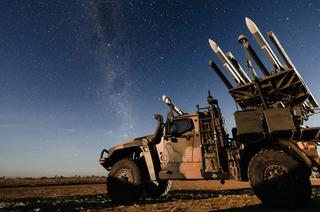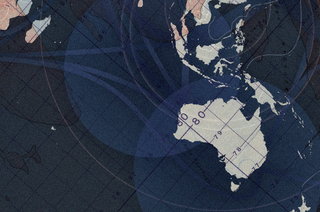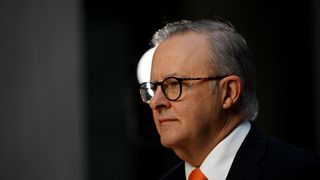Peter Dutton led his press release on defence funding with the well-trod line: “The first priority of any government is to keep Australians safe.” In this the Albanese government and the Coalition are on a unity ticket when it comes to national security and defence. From here their plans for defence spending, the focus of the election debate on national security, diverge.
With Dutton’s announcement of increased defence spending we have a Coalition with a big pledge to increase defence spending with no detail and no plan, and a government with a detailed plan but not enough money.
Dutton’s pledge was to inject $21bn into Defence spending to increase it to 2.5 per cent of GDP within five years and to 3 per cent of GDP within a decade. This is a major step forward in the debate. It stands in contrast to Labor’s most recent budget, which “brought forward” $1bn of already allocated spending, i.e. no new money.
Yet the Coalition’s plan stops at the funding commitment. There is no detail on what the $21bn will be spent on and no explanation of where the money will come from.
Dutton claimed that you “don’t make procurement decisions from opposition”, but the Coalition started its campaign with a commitment to an extra squadron of F-35 Joint Strike Fighters. It leaves one wondering what the Coalition was doing on defence policy over the last three years of opposition.
In an election defined by big spending on cost-of-living and housing measures, this late-term election defence announcement serves to put the Coalition’s budget credentials under even greater scrutiny. The overall pledge is: trust us to deliver the money and trust us to spend it right … after we are elected.
This is a bold approach, especially as there’s little evidence that such a policy stance will affect voters. In a recent UNSW survey, only one third of respondents believe the defence budget should be increased.
It’s also a bold ask of the electorate when the Opposition Leader and the Coalition have a major credibility problem on defence spending. The F-35 decision came with a funding commitment of $3bn – about one-third of what is needed to turn these new aircraft into a genuine capability.
In the twilight of the Morrison government, of which Dutton was defence minister, the Coalition government racked up $42bn in unfunded defence spending. As the Defence Strategic Review outlined, this was accompanied by $14bn of cuts to defence. Over-programming in Defence’s Integrated Investment Plan under the Coalition reached a totally unstainable figure of 32 per cent.
On the other side of the ledger, the Albanese government has increased defence spending but at nowhere near the rate needed to meet the strategic needs or the revamped Integrated Investment Plan.
Inflation, a weak Australian dollar and soaring prices for labour and materials have affected Defence just as it has the rest of us. Thus, the purchasing power of the defence dollar has steadily eroded.
Labor’s plans do see a substantial increase of defence spending over the next decade, but the vast majority of these spending increases are set to occur in the latter part of the decade – that is, after the next election campaign and then one after that. History shows that this is not a credible approach.
The lift in defence spending under Labor’s plan is also incredibly lumpy. Over the next few years, defence spending will increase by $2.9bn and $2.8bn, while spiking in 2027-28 and 2028-29 to $6.7bn and $6.9bn. Later in 2032-2033, Defence will get a $7.3bn increase in its budget. Such sudden jumps in defence spending are almost unprecedented. Labor’s plans are predicted to get the defence budget to about 2.3 per cent of GDP – a number seen by the vast majority of defence experts as inadequate.
Calls for increases to defence spending to 3 per cent of GDP have steadily gained momentum over the past year. This is based on the stress and risks inherent in our region, and the international strategic environment occurred well before the election of Donald Trump. The Trump factor, though, provides for even more incentive to increase defence spending. If Australia wants more self-reliance from the US in an era of a mercurial US president, then defence spending needs to increase. If it turns out that Trump’s America remains a reliable partner, then spending 3 per cent of GDP has emerged as the new standard for NATO and other US alliances. Either way, funding for defence has to increase.
In defence policy there is an age old saying – strategy without funding is not strategy. Conversely, funding without a strategy is still not strategy.
If we could combine the Coalition’s defence spending pledge and Labor’s defence spending plan you have the making of a sound defence strategy for Australia. Given the world we live in, this is desperately needed. As both sides of politics agree, we are living in the most dangerous strategic circumstances since World War II and the first priority of any federal government is the security of the nation and its people.






